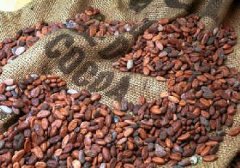There are mainly several kinds of acids in roasted coffee.

Formic acid is the most in shallow baking, and gradually decreases with the deepening of deep baking.
Acetic acid is the most in shallow baking, and gradually decreases with the deepening of deep baking.
Pyruvate has nothing to do with the degree of baking
Lactic acid has nothing to do with baking degree.
Malic acid is the most in shallow baking, and gradually decreases with the deepening of deep baking.
Citric acid is the most in shallow baking, and gradually decreases with the deepening of deep baking.
Quinic acid increases with the decrease of chlorogenic acid.
If you test with ARABICA% or ROBUSTA% and extract 30ml in 30 seconds, they all have a PH of 5.2.
So in terms of PH in the strict sense, coffee is "sour", but acidic and alkaline foods are not the same thing as the acid we usually drink.
The final metabolites of foods with more minerals such as potassium, sodium, calcium and magnesium are often alkaline, such as vegetables, fruits, dairy, soybeans and fungus. Properly paired with alkaline food will help to maintain acid-base balance in the body. The acidity and basicity of food has nothing to do with its own pH value (food that tastes sour is not necessarily acidic food). It is mainly defined by the fact that food is digested, absorbed and metabolized, and finally becomes acidic or alkaline in the human body. Those that produce acidic substances are called acidic foods, such as animal viscera, muscles, plant seeds (cereals). Those that produce alkaline substances are called alkaline foods, such as vegetables, melons, beans, tea and so on.
Another way is to ash the food to be tested, and then test the PH value of the ash to determine whether the ingredient is acidic or alkaline.
Summary: for coffee drinkers, we should not think that coffee is alkaline because it contains caffeine (alkaloids), nor because it contains a lot of acid. It is believed that coffee is neutral after being metabolized by the human body, so drinking coffee will not destroy the acid-base balance of our body.
Important Notice :
前街咖啡 FrontStreet Coffee has moved to new addredd:
FrontStreet Coffee Address: 315,Donghua East Road,GuangZhou
Tel:020 38364473
- Prev

The roasting degree of coffee beans has four kinds of common sense of coffee roasting.
Roasting causes coffee to produce coffee oil, which gives coffee a strong aroma. The most outstanding feature of this fragrance is that it is volatile and soluble in water. Therefore, people can not only smell the mellow smell of coffee beans, but also pour it into the cup and taste it carefully. Coffee is roasted to the following degrees: light roasting, light fragrance and high acidity is one of it.
- Next

Several stages of roasting of coffee beans
Light baking is rarely used and is generally used only for testing. Cinnamon roasting is widely used in some canned coffee. Deep roasting is a process in which coffee goes to a dead end and is gradually carbonized. Degree description stage description stage description special point description flavor and appearance description refers to baking until the end of the first burst. Light baking
Related
- Beginners will see the "Coffee pull flower" guide!
- What is the difference between ice blog purified milk and ordinary milk coffee?
- Why is the Philippines the largest producer of crops in Liberia?
- For coffee extraction, should the fine powder be retained?
- How does extracted espresso fill pressed powder? How much strength does it take to press the powder?
- How to make jasmine cold extract coffee? Is the jasmine + latte good?
- Will this little toy really make the coffee taste better? How does Lily Drip affect coffee extraction?
- Will the action of slapping the filter cup also affect coffee extraction?
- What's the difference between powder-to-water ratio and powder-to-liquid ratio?
- What is the Ethiopian local species? What does it have to do with Heirloom native species?

